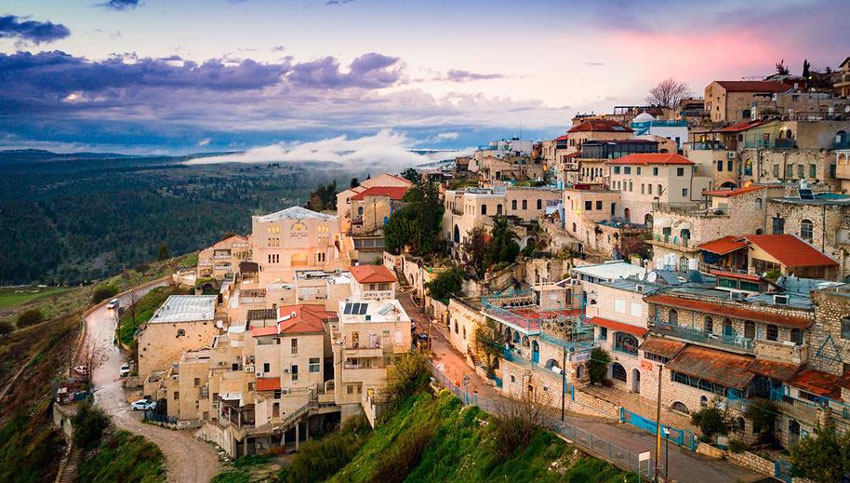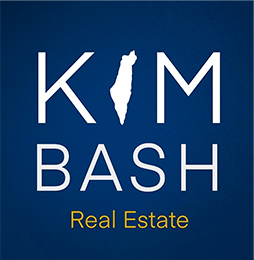BE’ER SHEVA
Be’er Sheva is Israel’s fourth-most populated city located in the south near the Negev Desert. The city is a mix of Sephardi, Mizrahi, and Ashkenazi families as well as diverse population of Jews from India, Russia, Ethiopia and now the United States. The game of chess is very popular in Be’er Sheva so much that it’s become Israel’s national chess center, with more chess grandmasters per capita than any other city in the world. Be’er Sheva is also home to Ben-Gurion University of the Negev. This city also serves as a center for Israel’s high-tech and developing technology industry. There is a lot of new construction, schools, shuls of all kinds, modern shopping centers, and walking paths, with low cost housing options.
Kiriyat Hasharon
Kiyrat Hasharon is a new and very pleasant neighborhood to live in, part of the City Hall of Netanya. It has only been around for a little over fifteen years. A few years ago almost no one knew of its existence. It had to be said that you lived next to the Academy this academy frequently receives French speakers. For example: Alain Finkielkraut the famous philosopher who no longer needs to be presented. It also has a section for French and English speaking students. Today, having developed strongly, this district has become very popular. It is located 5 to 8 minutes from the beach and the Hastmaout kikar by car and 30 minutes on foot. A train station is also accessible on foot which is important if one has to work in Tel Aviv in Ramat Gan or even in Haifa. The many advantages of Kiryat Hasharonis that living in a quiet area where children can play outside without problems while having all means of transport and sports nearby. But there are many others. The prices of rents or apartments are lower both at the seaside and in Netanya center.
Efrat
Considered the capital of Gush Etzion, it had a population of 10,806 in 2019. Modern Efrat was established in 1983 by Moshe Moskovits, who became the first mayor of Efrat and Shlomo Riskin, an Orthodox rabbi from New York City who settled in Efrat and became its Chief rabbi.
Efrat’s population are mainly religious Zionist, with a small number of ultra-orthodox and of non-observant residents. There are more than twenty Orthodox synagogues, mainly Ashkenazi, but a Sephardi and a Yemenite synagogue also exist and there are several Yeshivot, and Kollelim. The population includes native-born Israelis, and immigrants who have made aliyah from the United States, United Kingdom, Australia, France, South Africa, Argentina, The Netherlands, Canada, and Russia.
Efrat is made up of seven neighborhoods named for the Seven Species: Rimon (pomegranate), Te’ena (fig), Gefen (grapevine), Dekel (date palm), Zayit (olive), Tamar (date), and Dagan (grain – symbolizing both wheat and barley).
Maalot
Looking for your home in Israel and considering the north? Maalot, located 20 minutes east of Nahariya, has a warm Anglo, Torani commuity with affordable homes and new building projects. Hear from the locals including Marci Eskenazi our new Real Estate Broker and her husband David from Aliyah Network, all about the community! Schedule a Real Estate overview to find out what’s possible.
Jerusalem
Jerusalem, city of Gold is the MOST talked about city in the world! The capital of Israel, the “City of Peace”, One can find all types of people it’s a melting pot of people, from the Jewish Quarter of the Old City to trendy Katamon and Baka, suburban Har Nof and Pisgat Zeev, and eclectic Nachlaot, Jerusalem has something for everyone. The diverse community and lifestyle options mean that you can find everything from a home in a quiet residential street to an apartment that’s right in the middle of busy, city life. Whatever neighborhood you choose, you are sure to be surrounded by fascinating sights, interesting people and all of the amenities of any modern city. Meet the Anglo’s who are now living in Jerusalem, Israel

Tzfat
Tzfat is not only one of Israel’s holiest cities, it is also the highest city in the Holy Land. Set in the dense pine forests of the Upper Galilee, overlooking Tiberias and the Sea of Galilee, Tzfat is a delicious blend of ancient grandeur and modern-day resort. For thousands of years, the ancient city of Safed was conquered and reconquered – always changing hands. Said to have been founded by one of Noah’s sons after the Great Flood, the city was inhabited by the local Semetic populations throughout the years. Josephus mentions Tzfat as Sepph, a fortified Jewish town in the Upper Galilee. Today, after years of conflict ranging from the Crusaders to the Mamlukes to the British, Tzfat survives – as pretty, vibrant and mystical as ever!
Haifa
Haifa is Israel’s third-largest city, beautifully set on the slopes of Mount Carmel facing the Mediterranean Sea. There are a number of great things to do, including the Bahai Gardens, German Colony, as well as a number of top museums. The city is part of Israel’s so-called “Silicon Wadi”. High-tech companies around the Matam technology park, where Google, Apple and IBM have offices. Popular among English speaking olim are the neighborhoods of Ahuzza, Upper Hadar and Neve Shaanan. Ahuzza areas are fairly affluent neighborhoods and are home to both religious and secular communities. Near to Haifa University, makes this area desirable to international students and expats who make this neighborhood their home. The Upper Hadar is situated halfway between The Central Carmel neighborhood and the Hadar shopping district. Property prices are lower and all major bus routes, the Carmelit route and in close walking distance to shopping, this is an ideal location if you do not have your own car. The Upper Hadar offers wonderful views of Haifa Port, the bay and Galilee. Neve Shaanan is a large residential and commercial center with a selection of suburban shops, supermarkets and restaurants. This area is a very popular choice for English speaking, young immigrant, observant Jewish couples. Join Devorah Benarroch from KIm Bash Real Estate to meet some Anglo’s who are now living in Haifa, Israel. Community & Real Estate information, by Kim Bash

